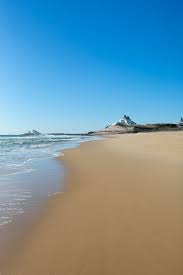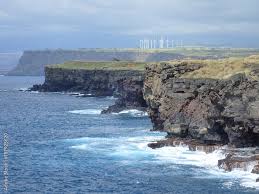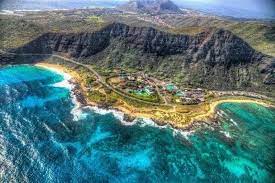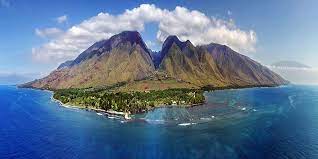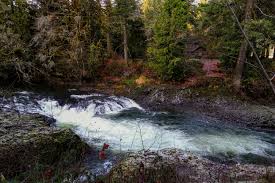Eight Tips for Exploring Oahu
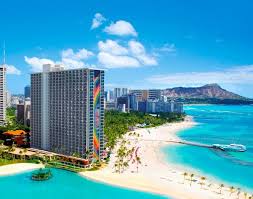
Oahu is one of the most beautiful and popular Hawaiian islands. It is known for its stunning beaches, lush tropical forests, and vibrant culture. Located in the central Pacific Ocean, Oahu is the third largest island in Hawaii and home to nearly one million people.
The island’s capital city, Honolulu, is a major tourist destination with its world-renowned Waikiki Beach. The beachfront area offers a variety of activities including surfing, snorkeling, scuba diving, and sailing. Visitors can also explore the historic downtown district or visit nearby Pearl Harbor National Memorial.
Oahu also offers plenty of outdoor activities for those looking to explore beyond the beaches. Hiking trails take visitors to stunning views of waterfalls and valleys. Lanikai Beach is a popular spot for kayaking and stand-up paddle boarding. There are also numerous golf courses on the island for avid golfers.
In addition to its natural beauty, Oahu has an exciting nightlife scene with plenty of clubs and bars to choose from. The North Shore is home to some of the best surf spots in the world while Waikiki offers a variety of shopping opportunities and restaurants serving up delicious local cuisine.
No matter what you’re looking for in your vacation destination, Oahu has something for everyone! From its stunning beaches to its vibrant culture, there’s no shortage of things to do on this beautiful island paradise!
Eight tips for exploring Oahu.
- Visit the North Shore for some of the best beaches and surf spots in Hawaii.
- Take a tour of Pearl Harbor to learn about World War II history and see the USS Arizona Memorial.
- Go on a hike at Diamond Head State Monument for stunning views of Waikiki Beach and Honolulu city skyline.
- Spend an afternoon in Waikiki to experience shopping, dining, and entertainment options along Kalakaua Avenue and Kuhio Beach Park.
- Drive up to Kualoa Ranch for horseback riding, ATV tours, ziplining, and more outdoor activities in lush tropical surroundings.
- Explore the Polynesian Cultural Center to learn about Hawaiian culture through interactive exhibits and shows featuring traditional music and dance performances by local artists from various Pacific islands nations such as Fiji, Samoa, Tahiti, Tonga, Marquesas Islands etc..
- Take a day trip out to Hanauma Bay Nature Preserve for snorkeling among coral reefs teeming with colorful fish life or take a guided kayak tour around Maunalua Bay Marine Life Conservation District (MLMLCD).
- Visit Dole Plantation for some delicious pineapple ice cream or take their Pineapple Express Train Tour around the plantation grounds!
Visit the North Shore for some of the best beaches and surf spots in Hawaii.
If you’re looking for some of the best beaches and surf spots in Hawaii, then you should definitely check out the North Shore of Oahu. This area is renowned for its stunning beaches, excellent surfing conditions and laid-back atmosphere.
The North Shore is home to some of the most iconic surf spots in the world, including Waimea Bay, Banzai Pipeline and Sunset Beach. Whether you’re a beginner or an experienced surfer, you’ll find plenty of waves to ride here. The area is also great for swimming, snorkeling and sunbathing.
The North Shore isn’t just about surfing though; there are plenty of other activities to enjoy here too. Take a scenic drive along Kamehameha Highway, explore the nearby countryside or visit one of the many local cafes and restaurants. There are also some great shopping opportunities in Haleiwa Town and other nearby towns.
So if you’re looking for an unforgettable beach vacation in Hawaii, make sure to include a visit to the North Shore on your itinerary!
Take a tour of Pearl Harbor to learn about World War II history and see the USS Arizona Memorial.
Pearl Harbor is one of the most famous sites in the United States and a must-see for any visitor to Oahu. Located on the island of Oahu in Hawaii, Pearl Harbor is home to the USS Arizona Memorial, which commemorates the attack on Pearl Harbor that took place on December 7th, 1941. The memorial honors those who lost their lives during the attack and serves as a reminder of the importance of peace and unity.
A visit to Pearl Harbor is an unforgettable experience. Visitors can take a tour of the harbor and learn about World War II history, including information about the attack itself and its aftermath. The tour also includes a visit to the USS Arizona Memorial, which offers a solemn reminder of this important chapter in American history. The memorial features an oil-stained marble wall inscribed with the names of all those who perished during the attack.
Visitors can also explore other parts of Pearl Harbor, such as Battleship Row, where visitors can see several ships that were damaged or sunk during the attack. Other attractions at Pearl Harbor include a museum dedicated to World War II and a memorial garden honoring those who served during this time period.
Visiting Pearl Harbor is an excellent way for visitors to learn about World War II history and pay their respects to those who lost their lives in this conflict. It’s an experience that will stay with you long after your visit to Oahu has ended.
Go on a hike at Diamond Head State Monument for stunning views of Waikiki Beach and Honolulu city skyline.
If you’re looking for a unique way to experience the beauty of Oahu, then you must go on a hike at the Diamond Head State Monument. This iconic landmark is one of the most recognizable symbols of Hawaii and offers stunning views of Waikiki Beach and Honolulu city skyline.
The hike is relatively easy and takes about an hour to complete. As you make your way up the trail, you’ll be rewarded with breathtaking views of the surrounding area. From the summit, you can take in panoramic views of Waikiki Beach, Honolulu city skyline and even Koko Head crater.
Along the way, there are several points of interest including World War II bunkers and a lighthouse built in 1917. There are also plenty of places to take photos so don’t forget your camera!
If you’re looking for an adventure that will give you lasting memories, then a hike at Diamond Head State Monument should definitely be on your list!
Spend an afternoon in Waikiki to experience shopping, dining, and entertainment options along Kalakaua Avenue and Kuhio Beach Park.
Oahu is a beautiful island located in the Hawaiian archipelago. It is known for its stunning beaches, lush rainforests, and vibrant culture. One of the best ways to experience all that Oahu has to offer is by spending an afternoon in Waikiki.
Waikiki is a popular tourist destination on Oahu and offers plenty of shopping, dining, and entertainment options along Kalakaua Avenue and Kuhio Beach Park. You can find everything from high-end boutiques to local souvenir shops along the avenue. There are also many restaurants offering both traditional Hawaiian cuisine as well as international flavors. After you’ve had your fill of shopping and dining, you can take a stroll along Kuhio Beach Park and take in the stunning views of the ocean.
Waikiki is a great place to spend an afternoon exploring all that Oahu has to offer. Whether you’re looking for a unique shopping experience or just want to relax on the beach, Waikiki has something for everyone. So make sure to add it to your itinerary when visiting Oahu!
Drive up to Kualoa Ranch for horseback riding, ATV tours, ziplining, and more outdoor activities in lush tropical surroundings.
If you’re looking for an outdoor adventure on Oahu, Kualoa Ranch is the place to be. Located on the windward side of the island, this 4,000 acre ranch offers a variety of activities for all ages and skill levels.
For those who prefer to stay on the ground, horseback riding is available through a guided trail ride with experienced wranglers who will show you the best of Kualoa’s lush tropical surroundings. If you’re looking for something with a little more speed, ATV tours are available that take you through jungle trails and past historic sites.
For the thrill seekers out there, Kualoa also offers ziplining tours that take you soaring high above the treetops. You can also explore hidden valleys and waterfalls while learning about Hawaiian culture and history from your guides.
No matter what activity you choose, Kualoa Ranch has something for everyone. From horseback riding to ziplining, there’s no shortage of fun and adventure at this beautiful ranch. So if you’re looking for a unique outdoor experience on Oahu, make sure to check out Kualoa Ranch!
Explore the Polynesian Cultural Center to learn about Hawaiian culture through interactive exhibits and shows featuring traditional music and dance performances by local artists from various Pacific islands nations such as Fiji, Samoa, Tahiti, Tonga, Marquesas Islands etc..
The Polynesian Cultural Center is a must-see destination for anyone visiting Oahu, Hawaii. Located on the North Shore of the island, this unique center offers visitors an opportunity to learn about the culture and heritage of the Hawaiian Islands and other Pacific Island nations in a fun and interactive way.
The Center features a variety of exhibits, interactive activities, and shows that showcase traditional music and dance performances by local artists from around the Pacific. Visitors can explore exhibits that focus on different aspects of Polynesian culture such as fishing, weaving, carving, navigation, and more. They can also watch live performances of traditional dances from Fiji, Samoa, Tahiti, Tonga, Marquesas Islands and other Pacific Islands nations.
In addition to the educational exhibits and shows at the Center, there are also a number of restaurants serving up traditional Hawaiian dishes as well as shops selling souvenirs from around the Pacific. The Center is open daily from 9am to 5pm and offers free admission for children under 5 years old.
The Polynesian Cultural Center is an ideal destination for anyone looking to learn more about Hawaiian culture or experience the culture of other Pacific Island nations in an engaging way. With its interactive exhibits and vibrant performances, it is sure to be a memorable experience for visitors of all ages.
Take a day trip out to Hanauma Bay Nature Preserve for snorkeling among coral reefs teeming with colorful fish life or take a guided kayak tour around Maunalua Bay Marine Life Conservation District (MLMLCD).
If you’re looking for an exciting day trip while visiting Oahu, look no further than Hanauma Bay Nature Preserve and Maunalua Bay Marine Life Conservation District (MLMLCD). Both locations offer breathtaking views and a plethora of activities to enjoy.
At Hanauma Bay Nature Preserve, visitors can take part in snorkeling among coral reefs teeming with colorful fish life. This is a great activity for those looking to experience the beauty of Hawaii’s underwater world. The preserve is also home to a variety of other marine life, including sea turtles, octopuses, and more.
Meanwhile, visitors can also take a guided kayak tour around Maunalua Bay Marine Life Conservation District (MLMLCD). Here you’ll be able to explore the area’s abundant coral reefs and diverse marine life. You’ll also get the chance to see some of Hawaii’s most beautiful beaches from the water.
No matter what activity you choose, both Hanauma Bay Nature Preserve and Maunalua Bay Marine Life Conservation District are sure to provide an unforgettable experience. So if you’re looking for a day trip full of adventure and beauty, these two locations should be at the top of your list!
Visit Dole Plantation for some delicious pineapple ice cream or take their Pineapple Express Train Tour around the plantation grounds!
If you’re looking for a fun and delicious adventure on the island of Oahu, then the Dole Plantation is the perfect spot for you! Located in Wahiawa, Dole Plantation offers a variety of activities and treats for visitors. The most popular attraction is the Pineapple Express Train Tour, a narrated tour that takes you around the plantation grounds to learn about pineapple farming and Hawaiian culture. Afterward, be sure to try some of their famous pineapple ice cream – it’s a must-have! With its beautiful scenery and tasty treats, Dole Plantation is an ideal spot for a day trip. So come out and experience all that Dole Plantation has to offer!
